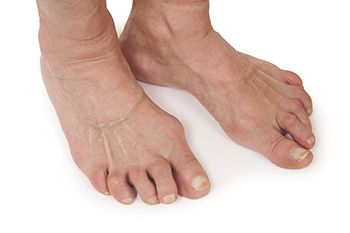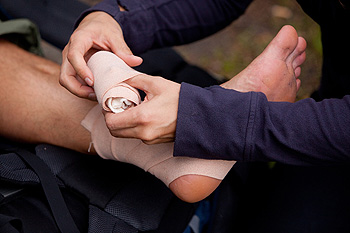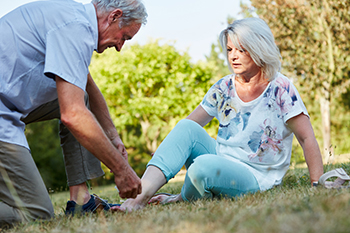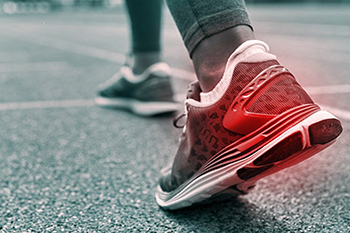
Rheumatoid arthritis, or RA, is an autoimmune condition where the immune system tries to destroy the linings of the joints, known as synovium, or the fluid in the joints called synovial fluid. The body mistakes these areas as disease invaders. Most people who are afflicted with rheumatoid arthritis develop symptoms in their feet. In fact, inflammation and pain in the feet are often one of the first signs an individual can have with RA. With rheumatoid arthritis, there can be pain in the joints, which may be accompanied by constant aching. Symptoms of this condition may often become worse after prolonged standing, walking, or running. With RA, a patient can experience swelling and stiffness, especially in the morning. The long-term inflammation thickens the synovium, which erodes cartilage and bone. The joints may look deformed, and wearing shoes may be challenging. The different types of foot problems associated with RA are heel pain, swelling of the nerves, and skin rashes. Rheumatoid nodules or lumps may develop under the skin. If you have rheumatoid arthritis and are experiencing foot pain, it is strongly suggested that you visit with a chiropodist as soon as possible who can help in providing relief and possibly prevent progression of this disease.
Rheumatoid arthritis (RA) is an autoimmune disorder in which the body’s immune system attacks its own otherwise healthy joint lining or synovium. While RA can affect any joint in the body, it often affects the small joints of the feet and the ankle joint. If you’re dealing with RA in your lower limbs, please consult with one of the chiropodists from The Footcare Centre. Our chiropodists can help you maintain the health of your lower limbs and your mobility.
Symptoms of RA primarily affect the joints of the feet and may include:
Pain
Swelling
Stiffness
Redness
Warmth
Difficulty walking
Gait changes
Bunions
Hammertoes
Treatment
While there is no cure for RA, your chiropodist can help you manage the health of your feet and maintain your mobility while living with this condition. Possible treatments include wearing orthotics, doing foot and ankle exercises, resting the feet, taking anti-inflammatory medications, getting steroid injections, and wearing braces for foot and ankle pain. In advanced cases of RA, joint replacement surgery may be helpful for mobility. Bunions, hammertoes, and other deformities can be corrected with surgery as well.
If you have RA, please feel free to contact our office located in . We offer the newest diagnostic and treatment technologies for all your foot care needs.





